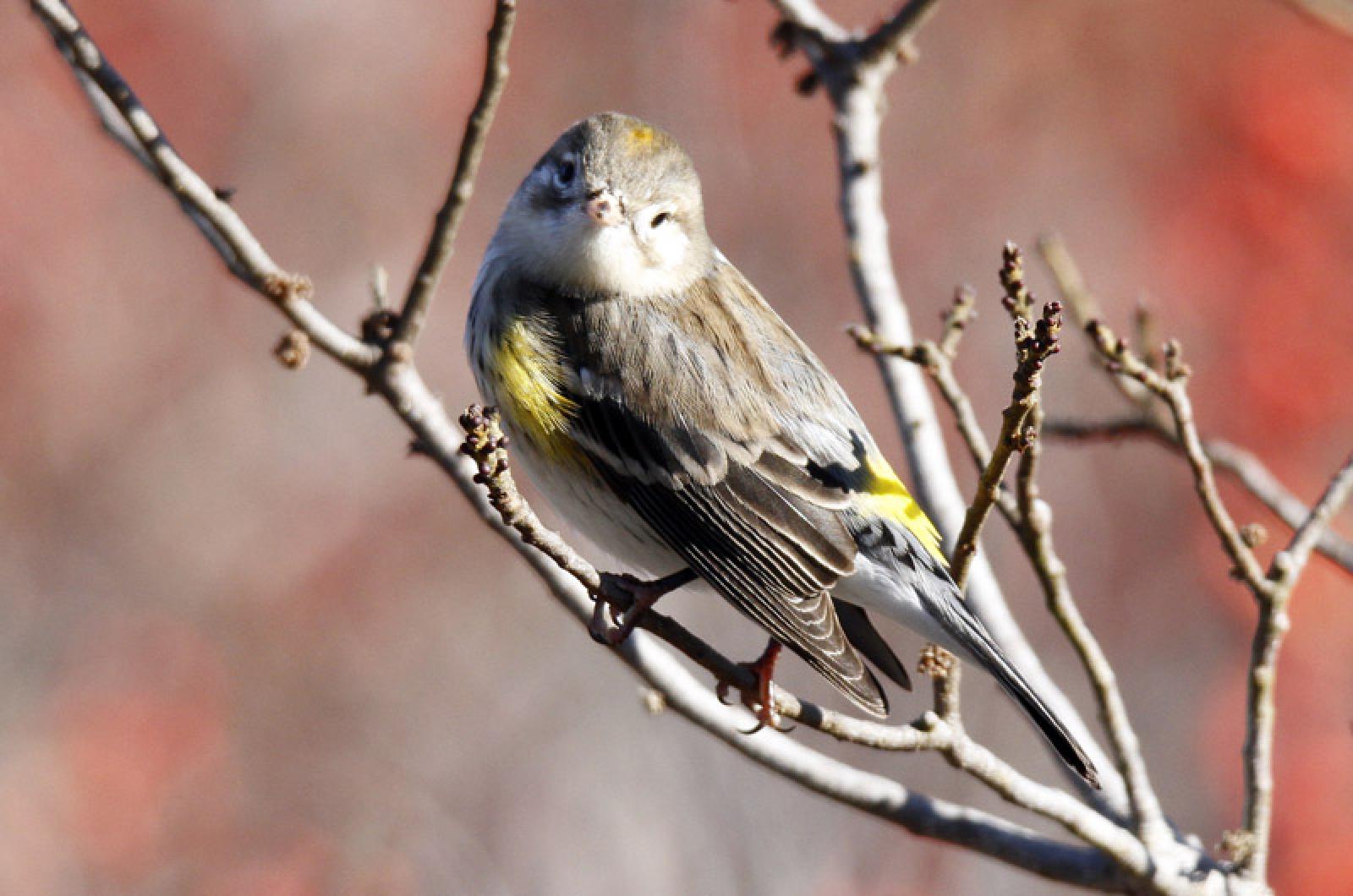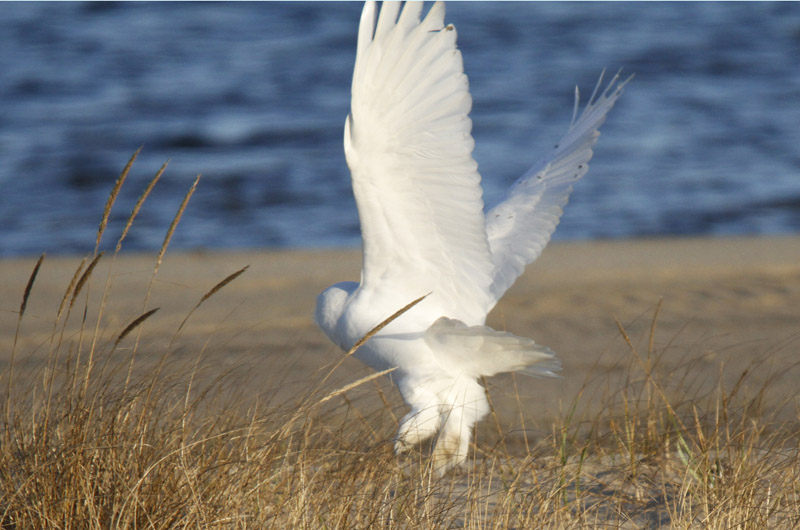The 56th annual Martha’s Vineyard Christmas Bird Count was held on Saturday, Jan. 2. It was a blustery day, starting with temperatures just above freezing and with a wind gusting up to 25 miles per hour. But we birders persevered and it was a fun adventure.
Part of the fun for the day is when we gather to tally our results. Food is an important part of the tally, warming us up after a long day in the cold westerly winds. I would be remiss if I did not thank both Elio of the Vineyard Grocer and Chef Deon at the VFW in Oak Bluffs for donating and preparing the delicious and healthy food that all the birders appreciated.
I must also acknowledge the tremendous amount of good work put in by compiler Luanne Johnson of BiodiversityWorks, who coordinated all aspects of this count.
Now please bear with me, as there are a lot of numbers in this column.
The preliminary numbers are that we counted 22,033 individuals of 120 different species. What we call Count Week — three days before and three days after the count — produced an additional five species that were not found on count day. This is exactly the average number of species observed but only a tad more than half of the average numbers of individuals counted. This would be consistent with the discouraging news that many populations of birds have declined considerably over the years. Other causes could be that birds were hiding in the vegetation to avoid the cold winds, and that the mild weather in December has delayed the arrival of our usual winter residents.
The Lambert’s Cove team found the most exciting find, four shearwaters flying well offshore. So far offshore, in fact, that they could not be identified to species, although they most likely were Manx shearwaters. Not only is this a new “species” for the count (the 215th species recorded on the count since 1960), it is the first time we have seen any shearwaters on the count. It is not often that we add a new category of birds!
Also exciting was a species we almost observed on count day. The Pacific loon that was reported in last week’s column was observed on Jan. 1, but neither the Menemsha team nor the Aquinnah team could find it the next day, during the count. This is the first time this species has been recorded in count week though.
Also unusual was the western kingbird found by the Squibnocket team. The only other times this species was observed on a count were in 1961 and 1984.
The Long Point team found a first year male rusty blackbird. This is remarkable since the species has declined by more than 95 per cent since the 1960s. While this is the 17th time this species has been seen since 1960, it is only the fourth sighting since 2000.
Three species set new high counts for numbers of individuals observed. Fish crows have shown the most explosive growth, with 558 individuals counted this year, a rather remarkable number since they were first seen on the Island in 2011. This increase reflects two distinct phenomena: a better count of the commuter fish crows that roost on the Island but spend their days in southeastern Massachusetts, and the presence of winter residents that are currently residing in Vineyard Haven and Katama. Their previous high was 20 individuals in both 2010 and 2011.
Also increasing were mute swans, as we found 369 mute swans this year. This is a slight increase over their previous high count of 356 all the way back in 1979. Their recent increase, however, is more dramatic, up from 37 individuals in both 2010 and 2011. American wigeon showed a more modest increase, with 148 this year which is up from their previous high of 88 individuals observed in 1998.
Both bald eagles and great egrets also set new highs this year, with two individuals of each species observed. This is the ninth sighting for the bald eagle and the fifth sighting of great egrets on our count, though great egrets have been seen on three of the past four counts.
Snowy owls were seen for the third straight year, only the second time they have been seen on three consecutive counts (1986 to 1988 being the other time). This is almost unremarkable, as only one individual was observed (hey, I said almost). There were 25 snowies two years ago, and last year we had three. But this year’s one individual is almost pure white, an adult male.
Two species have been seen on an almost annual basis since 2000 (turkey vulture) or 2001 (tufted titmouse). There were 180 tufted titmice found this year while last year we found 236. These are the two highest counts of titmice, and the apparent decrease this year may reflect the difficulty of counting birds in the wild and at feeders. We found 84 turkey vultures this year, up from their previous high of 68 individuals in 2011. These numbers deserve asterisks, however, as they may not accurately represent their population since they wander widely across the Island and so are the species whose individuals are most likely to be observed and counted by more than one team. There is no doubt that both species have increased greatly since 2000.
We found 414 red-throated loons, the third highest total ever (547 in 2003, and 425 in 2001) but by far the highest total in last 10 years. This is only the third time there were more red-throated loons than common loons. The other times were in 2000 and 2001. By the way, we found only 130 common loons this year, the lowest total since we found 68 individuals in 1990.
So far I have only mentioned species that were unexpectedly abundant this year, which is perhaps odd since I already mentioned that we observed about half the average number of birds on any count. So here are some of the species that are less common than they used to be.
Most notable are the scarcity of seaducks. In the 1980s and 1990s we would frequently spot 15,000 to 20,000 seaducks, primarily common eiders, white-winged scoters, black scoters and red-breasted mergansers. This year we had slightly fewer than 3,000 of these species.
Also notable are the decline of Carolina wrens and barn owls, both of which can be attributed to the severely cold and snowy winter last year. We found only 39 Carolina wrens, while the average for the previous decade was 155 individuals. And while any of the nocturnal owls are difficult to survey, we only found two barn owls. These may well be the only barn owls that survived from the Island’s breeding population of around 30 pairs before last winter.
This is the first year since 1977 that we have not found any red-necked grebes. Ring-necked pheasants were last seen on a count in 2011, while bob-white quail have been found only once (2014) since 2004.
The final results of the count will be published in a future edition of the Gazette.
There are lots of birds around, so please get out looking for them, and be sure to report your bird sightings to birds@mvgazette.com.
Robert Culbert leads guided birding tours and is an ecological consultant living in Vineyard Haven.








Comments (2)
Comments
Comment policy »